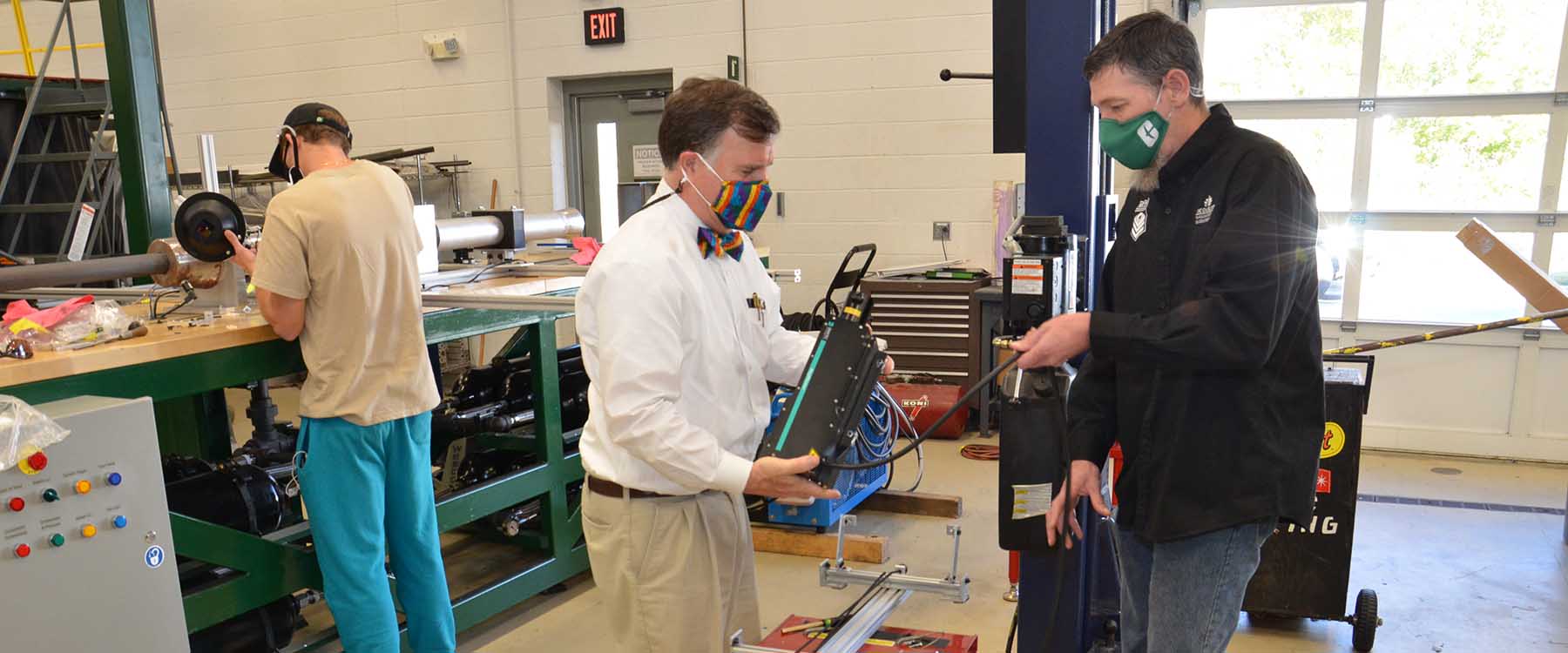
Because of their expertise in flow measurement, researchers from The William States Lee College of Engineering are working with doctors from the Wake Forest School of Medicine to help determine the extent to which the COVID-19 virus is spread during certain surgical procedures.
The researchers have developed a system to generate particles similar in size to the coronavirus and a technique that uses high-speed cameras and laser lighting systems to measure those particles in hospital operating rooms (OR).
Peter Tkacik, Ph.D., and Jerry Dahlberg ’14, ’16 M.S., ’18 Ph.D., faculty members in the Lee College Mechanical Engineering and Engineering Science Department, are working on this research with alumnus Samuel Hellman ’10 M.S., ’12 Ph.D., a flow measurement expert who now works at the Memorial Sloan Kettering Cancer Center.
“We got a phone call from doctors at Wake Forest who had concerns about air particles blown out during certain chest and throat procedures,” said Tkacik. "They approached us because they had seen information about our experimental flow measurement skills developed for an ONR (Office of Naval Research) program, and they wanted a way to measure the possible release of COVID-19 particles.”
The challenge for the UNC Charlotte researchers was to develop new techniques for measuring 25 to 400 micrometer particles in situ during thoracostomies (chest tube insertions) and tracheotomies (throat tube insertions) procedures.
“It was quite an effort to develop a working system for an OR environment,” Tkacik said. “We tried white-light sheets and 532nm green laser sheets, high-resolution and high-speed cameras. In the end, our technique worked better than we expected. One of the things that surprised us was the measurement was actually so sensitive that we could detect the pumping effects of the ventilator breathing machine being used in the room.”
The UNC Charlotte researchers have submitted a paper about the calibration techniques used to quantify the flow measurement results, and the Wake Forest doctors are working on a journal article to share the findings of the new flow techniques results with other medical professionals.
“It has been an interesting project, taking the techniques we have developed over the years here at UNC Charlotte and applying them to COVID-19 research,” Tkacik said. “It’s great to be contributing to research that will help with COVID efforts.”